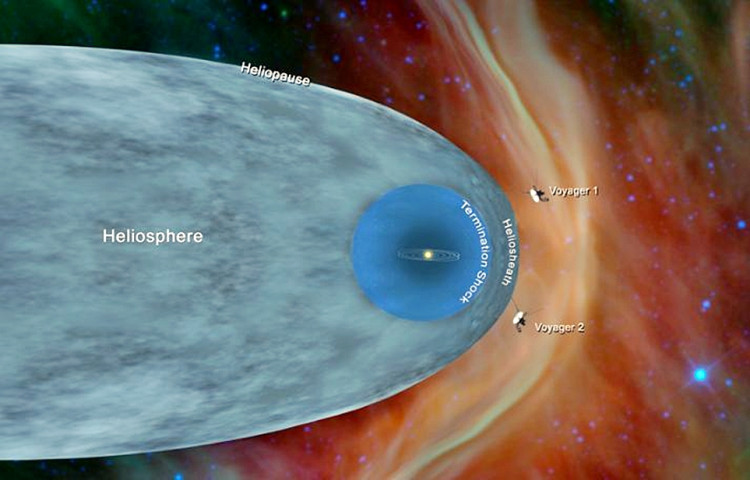Launched 51 years ago to study the Outer Planets, the American space probe Voyager 2 is now only the second man-made object to leave the "heliopause" after her sister ship, Voyager 1. She's now in interstellar space but is still inside our Solar System.
NASA said Voyager 2 is now 11 billion miles away in interstellar space and moving farther and farther at a speed of more than 30,000 miles per hour. It said Voyager 2 officially left the heliopause last Nov. 5.
The heliopause is the boundary between solar wind and interstellar wind where they are in equilibrium. It lies just outside the heliosphere, which is the vast, bubble-like region of space that surrounds and is created by the Sun
"I think we're all happy and relieved that the Voyager probes have both operated long enough to make it past this milestone," said Suzanne Dodd, project manager of the Voyager missions at NASA's Jet Propulsion Laboratory (JPL).
She said this is what we've all been waiting for. Now we're looking forward to what we'll be able to learn from having both probes outside the heliopause.
Voyager 2 is still doing the job it was made to do. It's still sending back observations of this uncharted part of space back to NASA scientists. Mission control can still communicate with Voyager 1 but it takes information moving at the speed of light 16.5 hours to make the journey back to Earth.
NASA declared the spacecraft had left the heliosphere when the onboard Plasma Science Experiment (PLS) showed it was no longer detecting plasma flowing out the Sun. That plasma stream creates a bubble called the heliosphere, which envelopes the planets of the Solar System and represents the edge of the Solar System.
Working on Voyager makes me feel like an explorer, because everything we're seeing is new, according to John Richardson, principal investigator for the PLS instrument. He's also a principal research scientist at the Massachusetts Institute of Technology in Cambridge.
Richardson noted that even though Voyager 1 crossed the heliopause in 2012, it did so at a different place and a different time, and without the PLS data. So Voyager 2 is transmitting data that allows the folks at NASA to still see things no one has seen before.
Voyager 2 is still sending back other information that confirms it's left the Solar System and that will prove useful to scientists studying interstellar space. This region the spacecraft is now moving through is called the "heliopause" because it exists at the very edge of the Sun's influence. The heliopause is still largely unknown.
There is still a lot to learn about the region of interstellar space immediately beyond the heliopause, said Ed Stone, Voyager project scientist based at Caltech in Pasadena, California.






